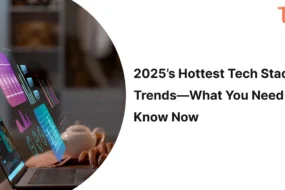
Having been around in e-commerce for a while, I can tell you that e-commerce in 2025 is something else. It isn’t just about setting up a Shopify store and praying your Facebook ads work for you. E-Commerce 2025 is fast, dynamic, and continuously evolving. One ear out of action, and you are likely to fall behind.
Therefore, I thought of breaking down the actuality of the whole situation-the flesh behind the Latin words, whether in the distant past or in tomorrow’s classroom-more of the trends reshaping our online selling. Depending on whether you are a nursery or scaling up, this is your curriculum.
So, I thought I would put together what I am seeing out there—trends, not the buzzword trends that are actually affecting the way we sell online. Some of this may already be on your radar, and others are going to shock you-the latter being better than the former. This is how it works, even if you are starting an online shop or merely thinking about running one.
Well, let’s just get to work.
1. E-Commerce 2025: How AI Will Revolutionize Product Recommendations

I know, I know-everyone’s been talking about AI for years. However, now it’s actually useful. Not just showing related products or sending abandoned cart emails. In fact, I’m talking about real-time, context-aware personalization. Like your website changing layout or product suggestions based on who’s visiting.
I tested one of these tools on a client’s store recently. Conversions jumped almost 18% in a week.
Also—chatbots? Way smarter now. Some of them can really talk and even close a sale also. It’s pretty cool.
2. Voice Shopping in E-Commerce 2025: A New Era for Shoppers

Didn’t expect that, did you? Well, In fact, people are really shopping into e-commerce 2025 with both Alexa and Google Assistant now-and not just for groceries.
For example, if you sell anything replenishable (think skincare, supplements, and pet food), make sure you’re considering voice search. In particular, make your product names simple and natural-sounding. Nobody’s going to say, “Reorder the 32 oz. Organic Vegan Eco-Friendly Unscented Hair Conditioner.” Instead, keep it human.
📊 Explore this Statista report on the rise of voice commerce and its projected growth.
3. AR and VR? Not Just for the Big Guys

Remember when augmented reality felt like something only IKEA or Apple could pull off? Well, not anymore.
Fast forward to 2025, I’m seeing small brands let customers “try on” sunglasses, preview furniture in their living room, or test lipstick shades from their phone. What’s more, customers LOVE it. It reduces returns. It makes people feel more confident about buying.
For instance, if you sell something visual—clothing, home goods, or accessories—look into AR tools. There are apps now that plug right into Shopify. They’re super user-friendly.
Moreover, in 2025, augmented reality (AR) and virtual reality (VR) are no longer reserved for the big players. In reality, small brands are leveraging these technologies to offer more immersive shopping experiences. Want to learn how AI is transforming UI/UX designs?
4. Social Media Has Officially Become a Mall in E-Commerce 2025

Furthermore, social media has officially become a mall.
You probably already sell through Instagram or TikTok. But now, the game’s totally changed. It’s no longer “click link in bio.” People are buying in the app without ever hitting your site.
TikTok Shop especially—it’s huge right now. I know sellers doing five figures a day just from live selling. Crazy engagement. People are impulse-buying in real time on a platform where they’re already spending hours a day.
So why sleep on the content? You don’t have to have all those highly polished written materials. Just be true, relatable, and constant.
5. Sustainable Marketing: More Important Than You Think

The real fact is that a lot of brands in the market in 2025 that would have nothing to say about sustainability are potentially losing a huge number of customers without even knowing it. What’s more, it’s not only about being eco-friendly; it’s equally about being transparent. People want to know:
– Where your stuff is made
– Who’s making it
– How it’s packaged
– How long it’ll last
As a result, they’ll pay more for brands that get this right.
In fact, I’ve had brands see serious lift just by switching to recycled packaging and putting a “plastic-free” badge on the product page. Such a small change can yield big results.
6. Consumers Expect Convenient Checkout

The real situation is that if your checkout process is not rapid, flexible, and mobile-friendly, people are leaving.
Customers’ expectations for the year 2025 are:
– Apple Pay
– Google Pay
– Buy Now Pay Later
– Maybe even crypto
Therefore, give them options. Make it easy. Don’t overthink it. Your checkout is not the place to be clever. Instead, just get them from cart to confirmation without any stress.
7. One Store, Many Touchpoints

Customers don’t care if they’re DMing you on Instagram, adding stuff to their cart on desktop, or clicking through from an email on mobile. Rather, they expect a seamless experience across every channel.
This shift has crossed from “nice to have” to “must-have.”
For example, by synchronizing marketing, support, inventory, and delivery operations across different platforms, one can be assured that from now on, nothing is going to stand in the way. Although one might think it would be a daunting task, it has in fact been made easy with the presence of platforms such as Klaviyo, Gorgias, and Shopify Flow.
8. Delivery Unleashes Its Smart and Clean Self

For a good number of brands, free and one-day shipping is enough to make the deal. People are looking for:
– Local fulfillment centers
– Carbon-neutral delivery
– Reusable packaging
– Honest delivery timelines
In fact, I’ve found that being transparent—“Ships in 2-4 days,” not “Ships fast!”— actually builds more trust than pretending to be Amazon.
9. People Actually Read Privacy Policies Now

Last one, and it might surprise you: privacy is a big deal in 2025.
People are paying attention to what data you collect, how you use it, and whether they can trust you. If your website feels shady or your checkout seems sketchy, they’re gone.
So yeah—make your privacy policy readable. Tell people what you do with their info. And most importantly, don’t be a creep with retargeting.
Wrapping It Up
Since basically upping the ante on e-commerce brands in 2018 is a clamorous suggestion!
Sustaining the momentum of trends for a solid E-Commerce 2025 year: These trends are not born out of curiosity but germinated out of necessity. Staying human in a digital world—making shopping a pleasant experience, an easy experience, a person-centered experience, and a trusting experience.
Start small. Pick one or two of these trends and test them. See what resonates. Stay curious. Pay attention to your customers.
Because the future of E-Commerce 2025? It’s already here. And it’s full of opportunity—if you’re ready to grab it.





